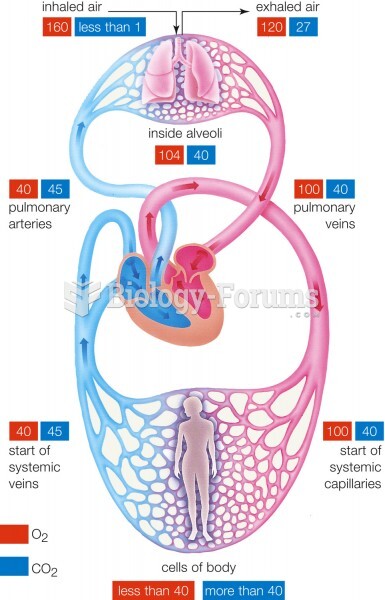Answer to Question 1
ANSWER: Carbon dioxide enters the atmosphere mainly from the decay of vegetation, but it also comes from volcanic eruptions, the exhalations of animal life, the burning of fossil fuels (such as coal, oil, and natural gas), and deforestation. The removal of CO2 from the atmosphere takes place during photosynthesis as plants consume CO2 to produce oxygen and sugars. The CO2 is then stored in roots, branches, and leaves. Rain and snow can react with silicate minerals in rocks and remove CO2 from the atmosphere through a process known as chemical weathering. The oceans serve as a large reservoir for CO2, as phytoplankton (tiny drifting plants) in surface water fix CO2 into organic tissues. Carbon dioxide that dissolves directly into surface water mixes downward and circulates through greater depths. Estimates are that the oceans hold more than 50 times the total atmospheric CO2 content. Evidence that the release and removal of carbon dioxide is not in balance includes the fact that the atmospheric concentration of CO2 has risen by almost 30 percent since 1958, when regular measurements began at Mauna Loa Observatory in Hawaii. The increase in atmospheric CO2 indicates that CO2 is entering the atmosphere at a greater rate than it is being removed. The increase appears mainly to be due to the burning of fossil fuels; however, deforestation also plays a role as cut timber, burned or left to rot, releases CO2 directly into the air, perhaps accounting for 10 to 15 percent of the observed increase in recent years. Measurements of CO2 also come from ice cores. In Greenland and Antarctica, for example, tiny bubbles of air trapped within ice sheets reveal that before the industrial revolution CO2 levels were stable at approximately 280 parts per million (ppm). Since the early 1800s, however, CO2 levels have increased more than 40 percent. With CO2 levels are presently increasing by more than 0.5 percent annually (2.0 ppm/year), scientists now estimate that the concentration of CO2 will likely rise from its current value of 400 ppm to a value exceeding 550 ppm by the end of this century, assuming that fossil fuel emissions continue at or above current levels.
Answer to Question 2
ANSWER: The amount of force exerted over an area of surface is called atmospheric pressure or, simply, air pressure. The pressure at any level in the atmosphere may be measured in terms of the total mass of air above any point. As we climb in elevation, fewer air molecules are above us; hence, atmospheric pressure always decreases with increasing height. Like air density, air pressure decreases rapidly at first, then more slowly at higher levels.







